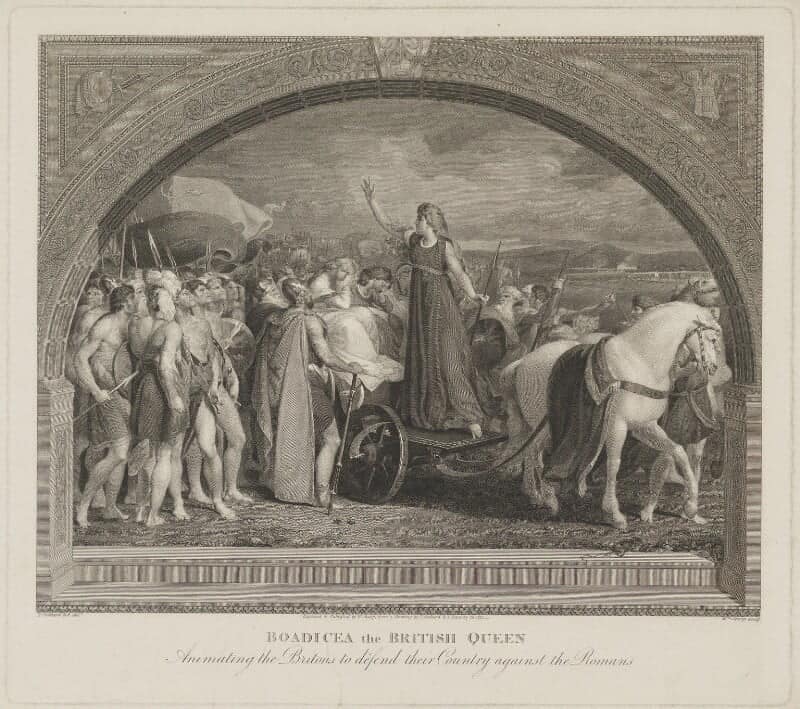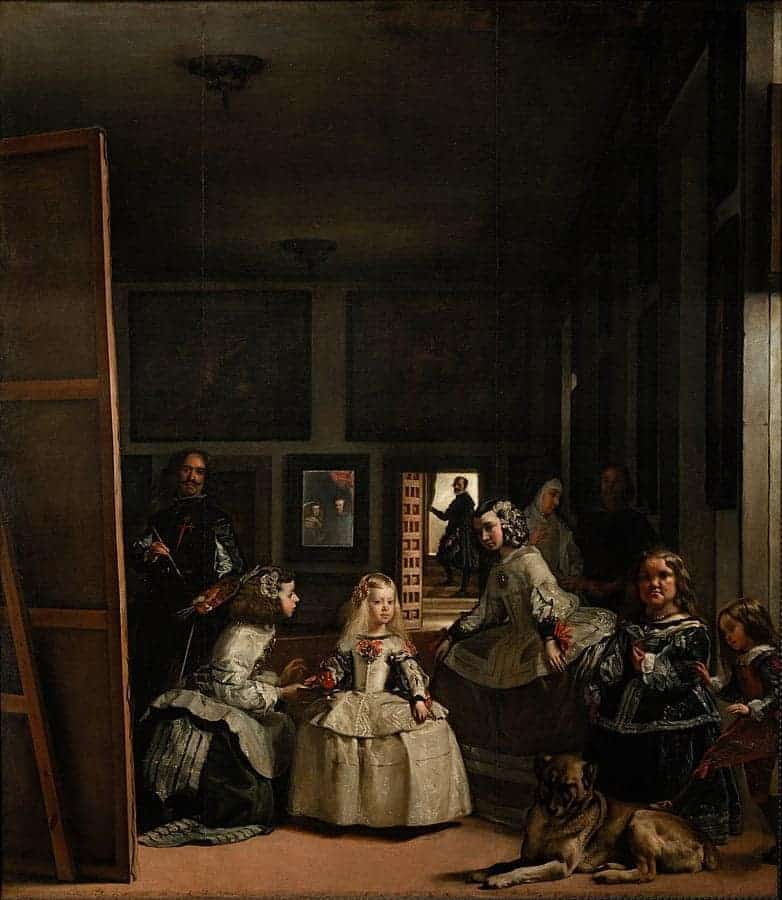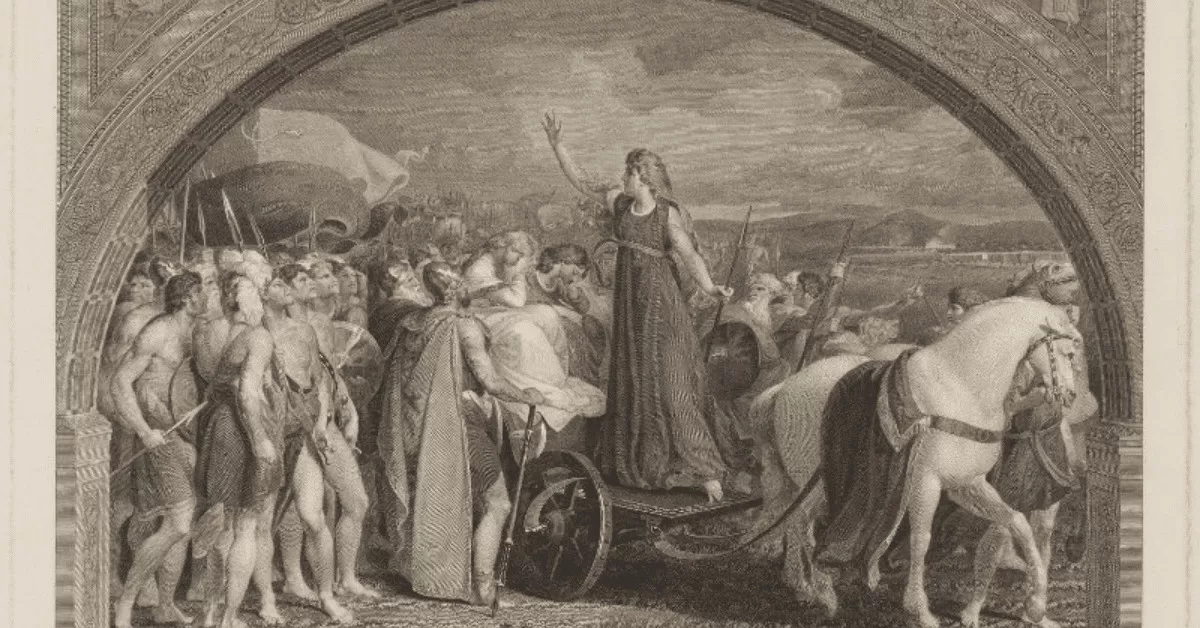10 “Doomed” Women Who Faced Less-Than-Perfect Endings
Fairy tales always promise happy endings: the girl gets the prince, the fancy castle, and the happily-ever-after. In real life, women often face less-than-perfect endings. Throughout history, women of all backgrounds dealt with terrible circumstances: death by childbirth/unhappy husbands/disease/poison/more, imprisonment, arranged marriages, and more. Men frequently deposed female rulers, thinking them incompetent to rule (see Mary Queen of Scots, for example).
In her book Doomed Queens, author and illustrator Kris Waldherr writes about fifty women who “met bad ends”, to quote the book’s subtitle. With a clever mix of fact-giving and humor, Waldherr offers insights into the “trials and tribulations of queens across the ages, a quirky, funny, utterly macabre tribute to the dark side of female empowerment”.1Kris Waldherr, Doomed Queens (New York: Broadway Books, 2008), front flap. In this blog post, I’ve chosen ten of these women with quite “doomed” endings who particularly caught my interest.
1. Roxane (340 BCE-310 BCE)
History knows Roxane as the wife of Alexander the Great. A princess from Sogdia or Bactria, Roxane married Alexander in 327 BCE after the latter defeated invaded Persia and defeated Darius, the ruler of the Achaemenid Empire. After four clearly blissful years together with no political or marital strife (/sarcasm), Alexander died in 323 BCE, leaving behind Roxane and two other wives: Stateira and Stateira’s cousin Parysatis.
Following his death, historians surmise that Roxane arranged for the deaths of Alexander’s other wives to safeguard her future and the future of his post-humous son Alexander IV. And, she even had the protection of Alexander’s mother, the formidable Olympias. Alas, given the chaos following the breakup of the Alexandrine empire, his likely successor Cassander poisoned mother and son in c. 310-309 BCE.
2. Empress Xu Pingjun (89 BCE-71 BCE)
The brief and tragic tale of Empress Xu Pingjun begins with her marriage to Liu Bingyi, the heir to the Chinese Western Han dynasty in c. 75 BCE. Liu Bingyi lived as a commoner after his father rebelled against his father, Emperor Wu. Despite this, the regent Huo Guang offered the imperial throne to Bingyi. He then ascended the throne in 75 BCE as Emperor Xuan.
During this period of history, Chinese emperors commonly kept numerous women as consorts and concubines. Xuan’s officials desired him to marry Huo Guang’s daughter and name her his empress. Xuan rejected this and made his wife Xu Pingjun empress instead. Nevertheless, Guang’s wife refused to accept this slight. She bribed a pregnant Xu’s female physician to poison the empress, who then died after giving birth in 71 BCE. Huo Guang’s daughter Huo Chengjun became Emperor Xuan’s second wife.
Perhaps we can say Empress Xu had the last laugh, however. Emperor Xuan executed the entire family in 66 BCE after discovering their involvement in a conspiracy to depose him.
3. Boudicca (c. 30 AD-60 AD)
Many people remember Boudicca as one of those fierce, intelligent warrior-women who stood against the might of ancient Rome. As is usually the case, the true story blends historical fact and legendary fiction. The tall, tawny-haired Boudicca, along with her husband Prasutagus, ruled the British Iceni tribe, a people located in what is now Norfolk. Prasutagus maintained an alliance with Rome – as a result, he was allowed to rule relatively independently.
Upon his death, he divided his territories between his two daughters (whose names have been lost to history) and the Roman emperor Nero. In a spectacular display of Nero not giving a damn about things such as wills and lesser kings, the emperor ignored Prasutagus’s wishes and annexed the Iceni territories. Boudicca confronted Roman authorities about this theft, but the Romans flogged the queen and raped her daughters.
Boudicca refused to take this lying down. In 60 AD, she amassed an army of approximately 120,000 and attacked Camulodunum (modern Colchester), Londinium (modern London), and Verulamium (modern St. Alban’s). Despite these victories, the Roman governor Suetonius and his army ultimately defeated Boudicca’s resistance. Her fate is unknown, but it’s thought she either poisoned herself or died of illness, according to the words of Tacitus or Cassius Dio respectively.
Throughout the years, Boudicca’s legend grew, and she’s now considered a British folk hero.

4. Galswintha (540-568) & Brunhilde (c. 543-613)
The stories of the sisters Galswintha and Brunhilde inextricably entwine. The daughters of Athanagild, the Visigothic King of Hispania (modern Iberian Peninsula), their marriages erupted into a feud that lasted over forty years. The two women married two powerful brothers: Galswintha married Chilperic I, the Merovingian king of Neustria (modern northwestern France), and Brunhilde married Siegbert of Austrasia (northern France). Both marriages occurred in 567.
Chilperic had the reputation as quite the philanderer. His mistress Fredegund disliked his whole “getting married” situation; perhaps she had her own queenly aspirations. Whatever her reasoning, Fredegund manipulated Chilperic into ordering Galswintha’s death in 568. A slave strangled the young queen only a year into her marriage. The treacherous widow crowned Fredegund as his queen shortly after Galswintha’s death.

As Waldherr writes, “The bonds of sisterhood transcend the grave.”2Ibid., 66. Brunhilde, whose marriage to Siegbert seems to have been relatively harmonious, took on the mantle of revenge for her murdered sister. Brunhilde convinced her husband (who didn’t much care for his brother anyways) and allies to take up arms against Chilperic and Fredegund. War claimed the lives of both Siegbert (d. 575) and Chilperic (d. 587). Fredegund also imprisoned her sister-in-law in Rouen until Brunhilde secretly married one of Chilperic’s many bastard sons.
Like a game of medieval ping pong, shots were traded back and forth until Fredegund’s son Chlothar executed Brunhilde by having her drawn and quartered and her remains thrown into a fire in 613.
5. Blanche of Bourbon (1339-1361)
If one looks at it, Blanche of Bourbon should have lived a charmed life in 1353. The daughter of Peter I, Duke of Bourbon and Isabella of Valois, the French princess married King Peter of Castile. As a result, she was destined to be a queen. Life, as it happens, does not always go as planned, especially for women.
Peter of Castile bears the epithet of “the Cruel,” and his treatment of Blanche provides one reason “the Cruel” serves as an apt nickname. He retreated to the side of his noble mistress María de Padilla (he possibly married her before Blanche) almost immediately after his wedding; the king only married Blanche due to the desire of a French alliance.
After a time, Peter imprisoned Blanche at the castle of Arevalo. Her family tried to help her, but they were not successful. Supposedly Peter ordered her death in 1361. However, no one knows for sure if someone assassinated her or how she passed. Regardless, Blanche of Bourbon died in 1361. María de Padilla ultimately bore Peter four children, and he met his end at the hands of his illegitimate half-brother Henry of Trastámara in 1369.
6. Joanna of Castile (1479-1555)

History loves to append epithets to prominent individuals. For instance, the Spanish Joanna of Castile is known as “la Loca,” or, “the Mad” for her frequent temperamental outbursts and, later, her predilection for keeping vigil over her dead husband’s casket on its way to its eternal rest in Granada in 1506. According to Waldherr, Joanna also cut off the hair of her lady-in-waiting when she discovered the lady fraternizing with Philip of Burgundy, Joanna’s spouse and son of the Holy Roman Emperor.3Ibid., 111.
The Spanish princess was the daughter of the royal powerhouse couple Ferdinand of Aragon and Isabella of Castile (the selfsame couple who sponsored Christopher Columbus’ voyage to the Americas). She married Philip in 1496 and bore him six children. After her mother’s death in 1504, Joanna ascended to the thrones of Castile and León. Her husband and father conspired to rule in her stead, however, citing her mental state as detrimental to her reign. Despite Joanna’s protestations, Ferdinand assumed power on her behalf in 1507. Her son Charles I ruled as regent instead and forcibly confined Joanna at the Royal Palace in Tordesillas, Castile until her death in 1555 at the age of 75.
Was she genuinely mad? Yes, and no. Joanna’s maternal grandmother suffered from bouts of melancholia, and it’s possible Joanna did as well (or some other illness). That being said, Philip constructed a “mental instability” narrative while he still lived so the truth probably lies somewhere in the middle.
7. Jeanne III of Navarre (1528-1572)
Sometimes, the method of one’s death becomes the fodder of legends. Take, for instance, the death of Jeanne d’Albret, Duchess of Vendôme and Queen of Navarre (a wealthy part of what is now Spain). ‘Twas said that Catherine de’ Medici, Queen of France, poisoned her husband’s cousin by sending her perfumed gloves. Oh, how devious! And yet, the truth of the matter is much more “boring.” But why would such rumors spread in the first place?
Simply put, Jeanne d’Albret and Catherine de’ Medici represented two opposite sides of a coin. Jeanne was French royalty, the niece of King Francis I and a descendant of Charles V. Catherine, on the other hand, came from the wealthy and illustrious but still very middle-class Medici family of Italy. Jeanne worshipped solely as a Protestant and eventually led the French Huguenot movement. Catherine, despite attempts to find a compromise, remained with the Catholic faction. It could be said the relationship between these two women represented, at a small level, the religious fissures which consumed France from 1562-1598. Needless to say, their relationship seems little less than cordial, even when Jeanne’s son Henry married Catherine’s daughter Marguerite in 1572.
But did Catherine maliciously poison her fellow queen? Most historians vehemently deny this. As Mark Strage writes, “The accusation first appeared in 1574 – two years after the fact [i.e. Jeanne’s death] – in a scurrilous and completely discredited account.”4Mark Strage, Women of Power: The Life and Times of Catherine dé Medici (New York and London: Harcourt Brace Jovanovich, 1976), 178. It’s more likely that Jeanne died of tuberculosis. But, as we see, people usually love lurid mysteries over fact.
8. Margherita Theresa of Spain (1651-1673)
If you took an art history course, chances are you encountered a famous painting called Las Meninas, a classic work by the Spanish court painter Diego Velázquez.5Javier Pérez Portús, “Diego Velázquez ‘Las Meninas,’” En: Velázquez y la familia de Felipe IV, [1650-1680], Madrid, Museo Nacional del Prado, 2013, p.126-129 n.16. We see a darling and lively young lady attended upon by two women, or meninas (“ladies-in-waiting”) and an entourage of other characters. In the background are the painter himself and a mirror with reflections of her parents, King Philip IV and Queen Mariana of Spain. It’s an intimate, almost candid, scene. Rightfully so, Las Meninas is considered among the best of Western art.
The painting depicts the Infanta Margherita Theresa of Spain. She married Leopold I and became the Holy Roman Empress, German Queen, Archduchess of Austria, and Queen of Hungary and Bohemia. The Habsburgs tended to marry within the family to keep the bloodline pure. Unfortunately, this often led to genetic instability, health issues, and disabilities (such as the infamous Habsburg jaw). Despite the fact Margherita’s parents had an uncle/niece relationship, she seems to have avoided these genetic pitfalls. However, she did succumb to the effects of multiple pregnancies and miscarriages and passed away at the age of 21 in 1673.

9. Mangammal (d. 1705)
Rulers, no matter their sex, should always see the well-being of their people as a primary duty. Despite evidence to the contrary, detractors to women rulers considered them weak and inefficient. They believed their roles to be solely domestic, focused on raising a family rather than wielding political influence. Rani Mangammal (“rani” meaning queen) knocks this paradigm off its pedestal and showcases women as effective and capable administrators.
In 1682, King Chokkanatha Nayak of the Madurai Nayak kingdom in India died. His son later followed in 1689, leaving behind his own son as heir. Mangammal took up the reins of power as regent until her grandson came of age. The rani invested in public works projects such as irrigation canals, the construction of municipal and religious buildings, and roads. She ruled successfully until her grandson came of age. At that time, Mangammal and her prime minister refused to relinquish her power. As a result, the army subsequently seized and executed the rani of Madurai in 1705.
10. Caroline of Brunswick (1768-1821)
The marriage between Caroline of Brunswick and her husband Prince George (later King George IV) of the United Kingdom morphed into Georgian England tabloid fodder. Attractive and spirited Caroline married the Prince of Wales in 1795. Almost immediately, their relationship fell apart; George only wed her in exchange for the forgiveness of his debts and an increased allowance. He much preferred the company of Maria Fitzherbert, his first wife (deemed illegal because it violated the Royal Marriages Act 1772). Prince and princess separated after the birth of their daughter Charlotte in 1796.
What followed then captivated the public for the next couple of decades. The rumor mill churned so quickly that it could easily have made rumor bread! George was not a popular man, and his visible dislike of his wife mirrored the feelings many of his people bore towards him. He left Caroline only a shilling in his will (and left the rest to Mrs. Fitzherbert), tried to limit the time she spent with their daughter, and even established a secret commission to determine if she had a child by a lover. Caroline eventually left for Europe and carried on her own affairs, earning the derision of the press and attempts from George to divorce her.

The Prince of Wales ascended to the British throne in January 1821. Caroline returned to London for her husband’s coronation in July, anticipating her own crowning as queen. Though popular with the public, she was turned away at the doors of Westminster Abbey. She began not feeling well not long after thought. Caroline believed she was being poisoned, and she died on August 7, 1821.
Did George poison her? Rumormongers would love to believe that. However, many casted doubt on the poison theory and instead believe she succumbed to an illness.6See the epilogue in Clerici’s A Queen of Indiscretions: The Tragedy of Caroline of Brunswick, Queen of England.
Sources
- Strage, Mark. Women of Power: The Life and Times of Catherine dé Medici. New York and London: Harcourt Brace Jovanovich, 1976.
- Waldherr, Kris. Doomed Queens. New York: Broadway Books, 2008.
Please note: Some of the links in this article may be behind a paywall and require login access from a university or library or membership.

